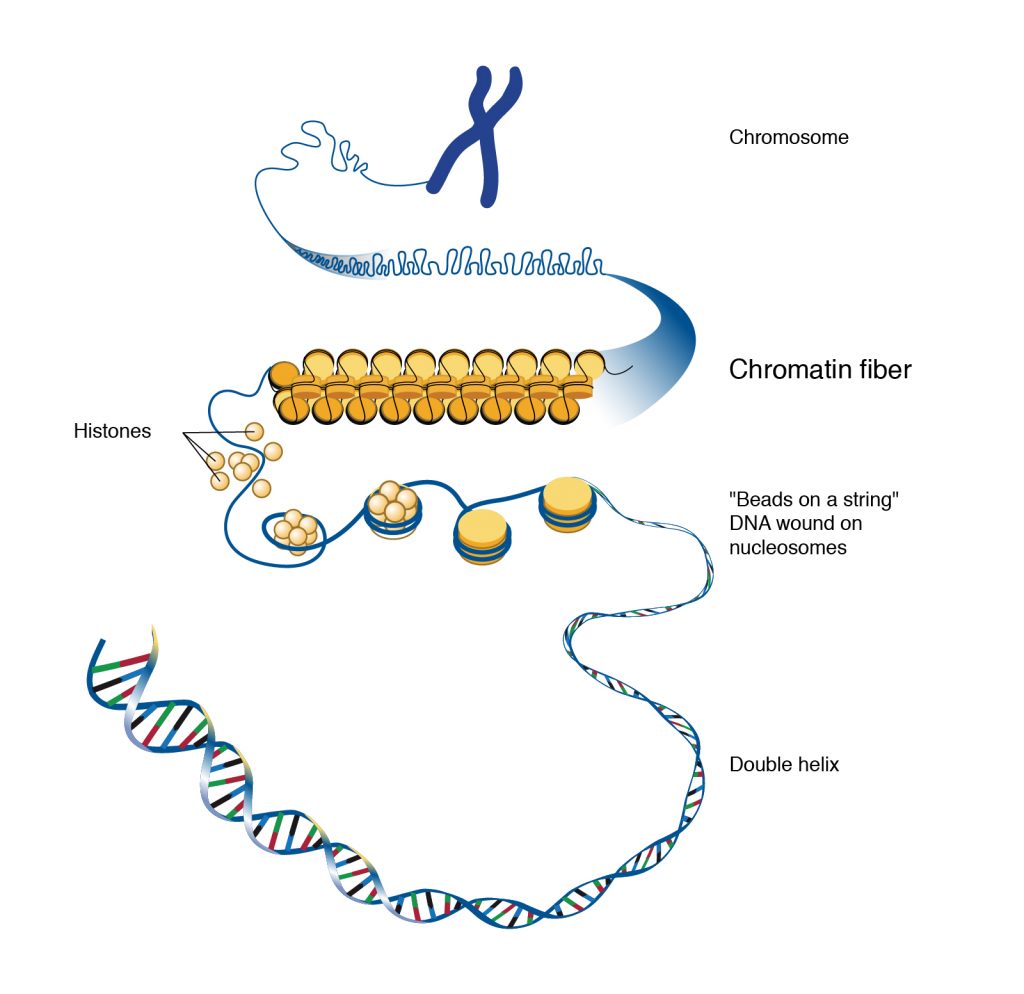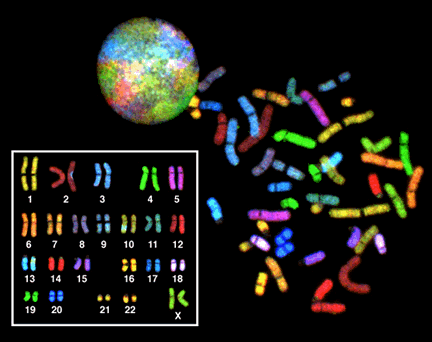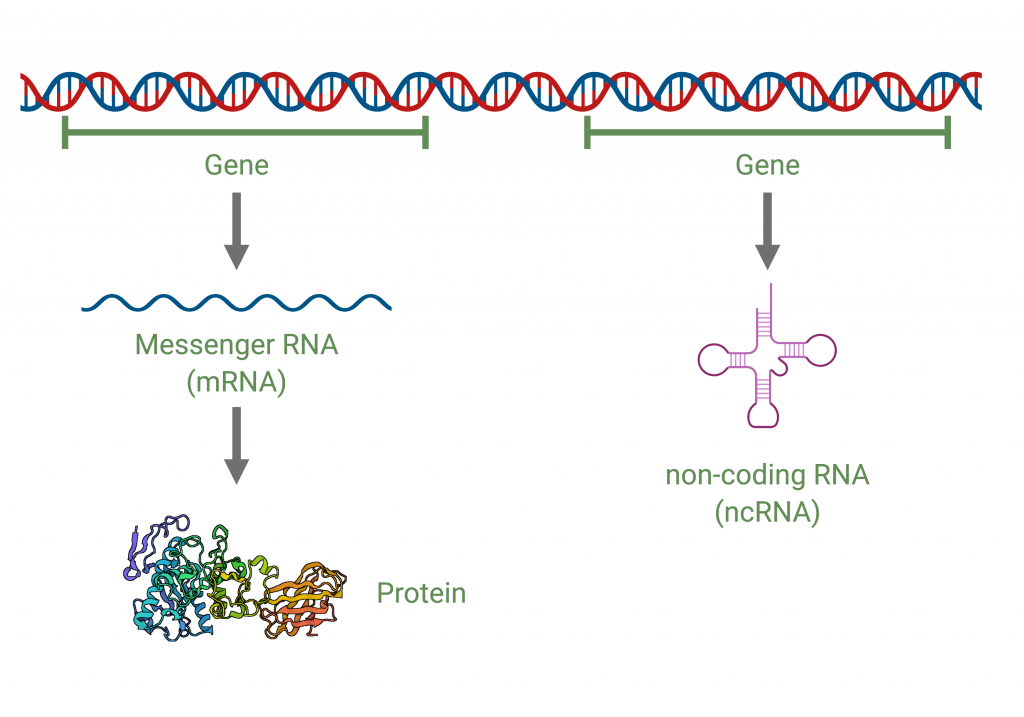12.3 Organization of DNA in the cell
The Genome
The cell’s entire genetic content is its genome. Genomes consist of one or more chromosomes. Each chromosome is a single, double-stranded molecule of DNA. Prokaryotes generally have a single circular chromosome. Eukaryotes generally have multiple linear chromosomes that are enclosed within a membrane-bound nucleus. Each eukaryotic species has a characteristic number of chromosomes per cell. For example, humans have 46 chromosomes per cell. Eukaryotic genomes also include mitochondrial DNA and/or plastid DNA. These organelles have their own DNA because they were originally derived from free-living bacteria.
Chromatin and Chromosomes
Chromatin is the material that makes up a chromosome. It consists of DNA and proteins. The major proteins in chromatin are histone proteins, which function to package and condense the DNA molecule. Each chromosome contains one or two double-stranded DNA molecules. The word chromosome is composed of two parts: “chromo” meaning colored or stained and “some” meaning object or body. It is important to recognize that chromosome refers to a complete object. A single chromosome may contain thousands of genes.

When a eukaryotic cell is actively undergoing cell division, the chromatin is tightly packaged into a compact chromosome structure. When a cell is not actively dividing, the chromatin is more relaxed and spread out so that gene expression can take place.

Genes
A gene is defined as a sequence of DNA that codes for a functional product. Many genes contain the information to make protein products. Other genes code for RNA products. On each chromosome, there are thousands of genes that are responsible for determining the genotype and phenotype of the individual. The human genome contains about 3 billion base pairs and has around 20,000 genes that code for proteins.

- Protein structure PDB ID: 1GPL Withers-Martinez, C., Carriere, F., Verger, R., Bourgeois, D., Cambillau, C. (1996). A pancreatic lipase with a phospholipase A1 activity: crystal structure of a chimeric pancreatic lipase-related protein 2 from guinea pig. Structure 4:1363 ↵
all of the genetic material of a cell or organism
a molecule of DNA; part or all of the genome. Also refers to the condensed version of chromatin that is found within cells undergoing cell division.
organisms which are comprised of cells that lack a nucleus
organisms that are comprised of cells that have a nucleus
(singular = mitochondrion) cellular organelles responsible for carrying out cellular respiration. Originally derived from proteobacteria via endosymbiosis.
membrane-bound organelle found in the cells of some eukaryotes. Originally derived from cyanobacteria. The chloroplast is an example of a plastid.
protein-DNA complex found in eukaryotic cells
segment of DNA that codes for a functional molecule (usually, a protein)

